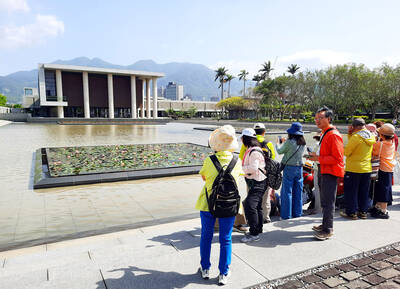A band of five middle-aged men was warming up for rehearsal in a cluttered one-room studio, bashing out an unadorned version of Shake, Rattle and Roll. Two men, both named Tom, stepped to the microphones to harmonize on the song’s chorus. The clean-shaven one, playing rhythm guitar, spends most of his days working as a music teacher in suburban Nashville, Tennessee. The bearded, bass-playing Tom is one of the biggest rock stars in the world, who has sold more than 50 million records, has been nominated for 18 Grammy Awards and was most recently seen headlining the halftime show at the Super Bowl.
Thirty-two years after the band broke up, Tom Petty has reassembled Mudcrutch, the group he started in his native Gainesville, Florida, and moved to Los Angeles, seeking stardom. Mudcrutch didn’t hit it big back in the 1970s, but out of the band’s ashes Petty created the Heartbreakers, who have generated a staggering stream of hits for three decades.
The rhythm guitarist practicing today, Tom Leadon, quit Mudcrutch in 1972 while the band was still playing bars in Gainesville, taking a losing bet on making it in California. Now, however, he’s gearing up for his slot on a sold-out tour. “I was driving home from getting groceries at Kroger’s, and my cell phone rang,” said Leadon, 55, who has taught at the same school for 17 years. “He said, ‘Hey, it’s your old pal Tom Petty.’ My first thought was that it was one of my friends pulling my leg. I wasn’t going to fall for that.” Once he was convinced that it really was his world-famous former band mate, Leadon pulled to the side of the road to chat, and Petty told him he wanted to get the group back together.

PHOTO: NY TIMES NEWS SERVICE
The reunion is an unexpected move for an artist of Petty’s stature. Though almost all multiplatinum sellers pass through a number of bands on their way to the top, no one else has returned to his roots in such a dedicated manner. It’s the third day of practice in this well-hidden studio — tucked in an alley, off an anonymous industrial street in the San Fernando Valley — for a two-week tour of West Coast clubs, which started Monday in Santa Cruz, California, and includes a six-night stand at the Troubadour in Los Angeles. On April 29 Mudcrutch’s self-titled debut album will be released on Reprise Records. (An arena tour by the Heartbreakers will follow, starting May 30 and running until Aug. 29.)
Bruce Springsteen has occasionally brought one of the early members of the E Street Band onstage for a song, but as far as anyone knows he has never gotten back together with Steel Mill or any of his other earlier, long-forgotten bands. More than 45 years after being fired by the Beatles, Pete Best continues to tour the world as the most famous near-miss in rock ’n’ roll history. For once, though, a couple of musicians will get a chance to see what might have been.
About two years ago, Petty, 57, said, “I just had this random thought: ‘I really liked that band, I wonder what it would be like to get them together.’” He and the rest of Mudcrutch — Leadon, Mike Campbell, Randall Marsh and Benmont Tench — were gathered around a table in the middle of the studio, which usually serves as a warehouse for the Heartbreakers. “One day last year I got my nerve up and called Tom. He probably thought I’d gotten ahold of a bad bottle or something.”
Marsh, 58, a drum teacher who recently moved back to Florida from California, got the news while he was shooting an interview with the director Peter Bogdanovich for the 2007 Petty documentary, Runnin’ Down a Dream. “Bogdanovich said, ‘By the way, Tom said he might want to put Mudcrutch back together,’” he said. “I didn’t make too much of it. Months went by, and then finally Tom called me.”
Last August, Leadon and Marsh flew to California and stayed at Petty’s home in Malibu; the next day the three joined up with Campbell and Tench, the lead guitarist and keyboard player in the Heartbreakers, who are also Mudcrutch alumni. “When Tom called me and said he wanted to do this,” Campbell said, “my first reaction was, why?”
Marsh said: “I thought we’d come in here, do a few songs, it would be nice to see everybody. But I think Tom had some kind of insight that something would happen.”
They all agree that the music clicked immediately. “Tom brought in this song he’d just written,” Campbell, 58, said. “We started playing it, and when we got to the chorus, Leadon stepped up to the mike and sang the harmony. I don’t know how he even knew the words yet.”
The reborn Mudcrutch recorded four songs that first day, and in less than two weeks an album was completed. Petty chose to avoid the pressure of a studio and work in this rehearsal space. The members played facing one another in a circle, and a sound — swampier than the Heartbreakers, with bluegrass flourishes and a stomp reminiscent of Neil Young’s Crazy Horse — rapidly surfaced.
Petty wrote new material every night. “I’d go home with all this adrenaline,” he said. “I’d be pacing around, so I’d pick up my guitar and hammer something together, knowing that whatever I wrote I could cut the next day. It was so much fun, I didn’t want to show up and have nothing to play.”
Most of the album’s 14 songs (including covers of the trucker classic Six Days on the Road and the Byrds’ Lover of the Bayou) were done in just two or three takes. The recording of the nine-minute Grateful Dead-style jam Crystal River documents the one and only time the band played that song. “It all happened so quickly,” Marsh said, “that there wasn’t much chance to get freaked out.”
As the five musicians rehearsed, in this room stuffed with the flotsam of years spent on the road, their enthusiasm for the project was clear. Slugging coffee and smoking cigarettes between songs, Petty (who has not played the bass as his main instrument since assembling the Heartbreakers) claimed that his singing was the best it had been in years. At an age when most stars are content to cruise, he seemed thrilled to have a new challenge.
“Really it makes no sense,” said Warren Zanes, a musician and educator who edited the oral history companion to Runnin’ Down a Dream. “It’s completely at odds with the self-mythologizing tendency you see in a lot of rock stars. But Tom Petty is a guy who likes to have fun playing music, and he continues to explore different ways to do that.”
Petty’s label wasn’t exactly expecting the Mudcrutch album but had no hesitation about backing this left-field country-rock project. “We feel like we should support Tom whatever he does,” said Diarmuid Quinn, chief operating officer of Warner Brothers Records. Quinn compared Petty with unconventional musicians (and label mates) like Neil Young and Jack White.
“With this kind of artist, you go with their instincts,” Quinn said, “because they’re usually right.”

When the South Vietnamese capital of Saigon fell to the North Vietnamese forces 50 years ago this week, it prompted a mass exodus of some 2 million people — hundreds of thousands fleeing perilously on small boats across open water to escape the communist regime. Many ultimately settled in Southern California’s Orange County in an area now known as “Little Saigon,” not far from Marine Corps Base Camp Pendleton, where the first refugees were airlifted upon reaching the US. The diaspora now also has significant populations in Virginia, Texas and Washington state, as well as in countries including France and Australia.

On April 17, Chinese Nationalist Party (KMT) Chairman Eric Chu (朱立倫) launched a bold campaign to revive and revitalize the KMT base by calling for an impromptu rally at the Taipei prosecutor’s offices to protest recent arrests of KMT recall campaigners over allegations of forgery and fraud involving signatures of dead voters. The protest had no time to apply for permits and was illegal, but that played into the sense of opposition grievance at alleged weaponization of the judiciary by the Democratic Progressive Party (DPP) to “annihilate” the opposition parties. Blamed for faltering recall campaigns and faced with a KMT chair

Article 2 of the Additional Articles of the Constitution of the Republic of China (中華民國憲法增修條文) stipulates that upon a vote of no confidence in the premier, the president can dissolve the legislature within 10 days. If the legislature is dissolved, a new legislative election must be held within 60 days, and the legislators’ terms will then be reckoned from that election. Two weeks ago Taipei Mayor Chiang Wan-an (蔣萬安) of the Chinese Nationalist Party (KMT) proposed that the legislature hold a vote of no confidence in the premier and dare the president to dissolve the legislature. The legislature is currently controlled

Dull functional structures dominate Taiwan’s cityscapes. But that’s slowly changing, thanks to talented architects and patrons with deep pockets. Since the start of the 21st century, the country has gained several alluring landmark buildings, including the two described below. NUNG CHAN MONASTERY Dharma Drum Mountain (法鼓山, DDM) is one of Taiwan’s most prominent religious organizations. Under the leadership of Buddhist Master Sheng Yen (聖嚴), who died in 2009, it developed into an international Buddhist foundation active in the spiritual, cultural and educational spheres. Since 2005, DDM’s principal base has been its sprawling hillside complex in New Taipei City’s Jinshan District (金山). But